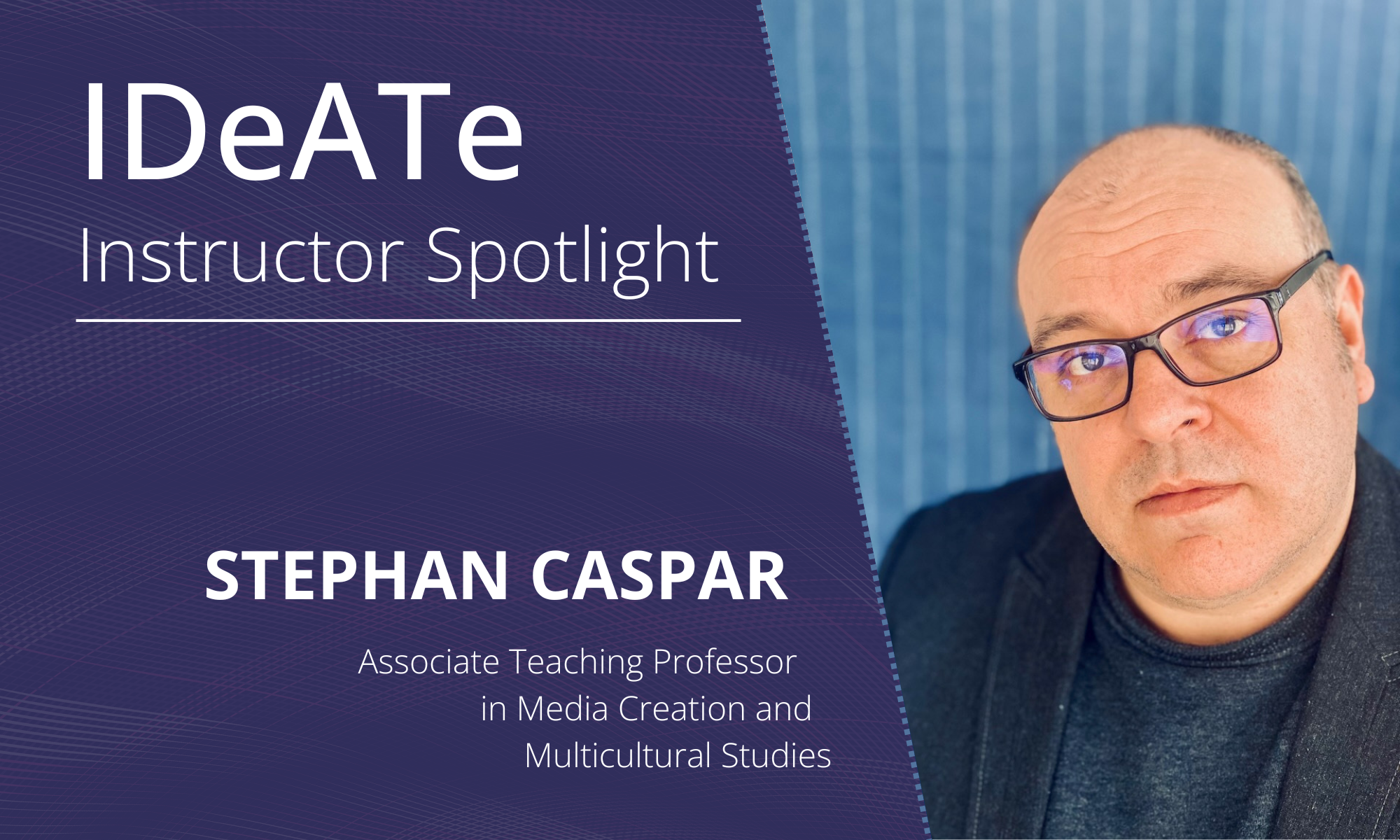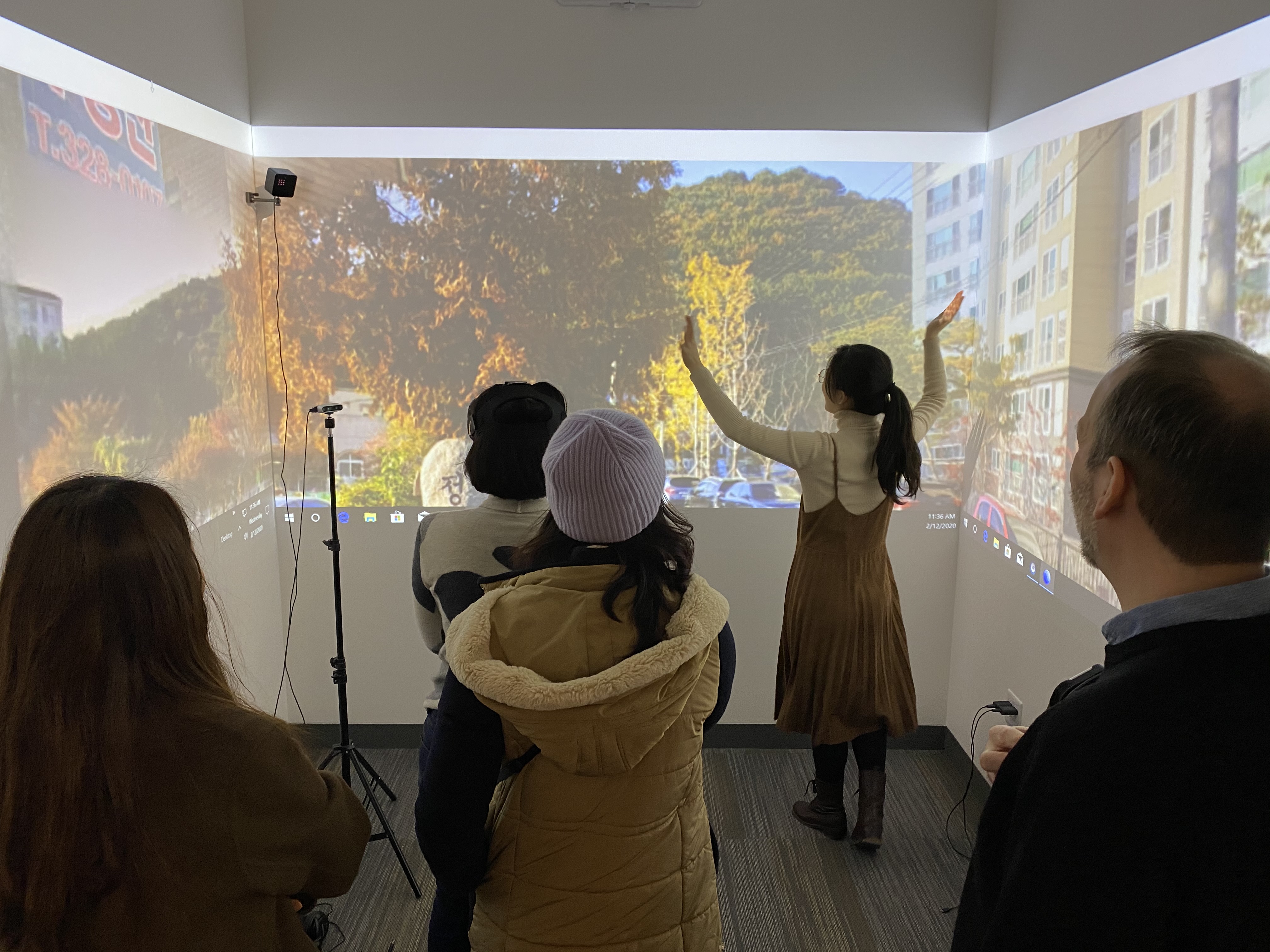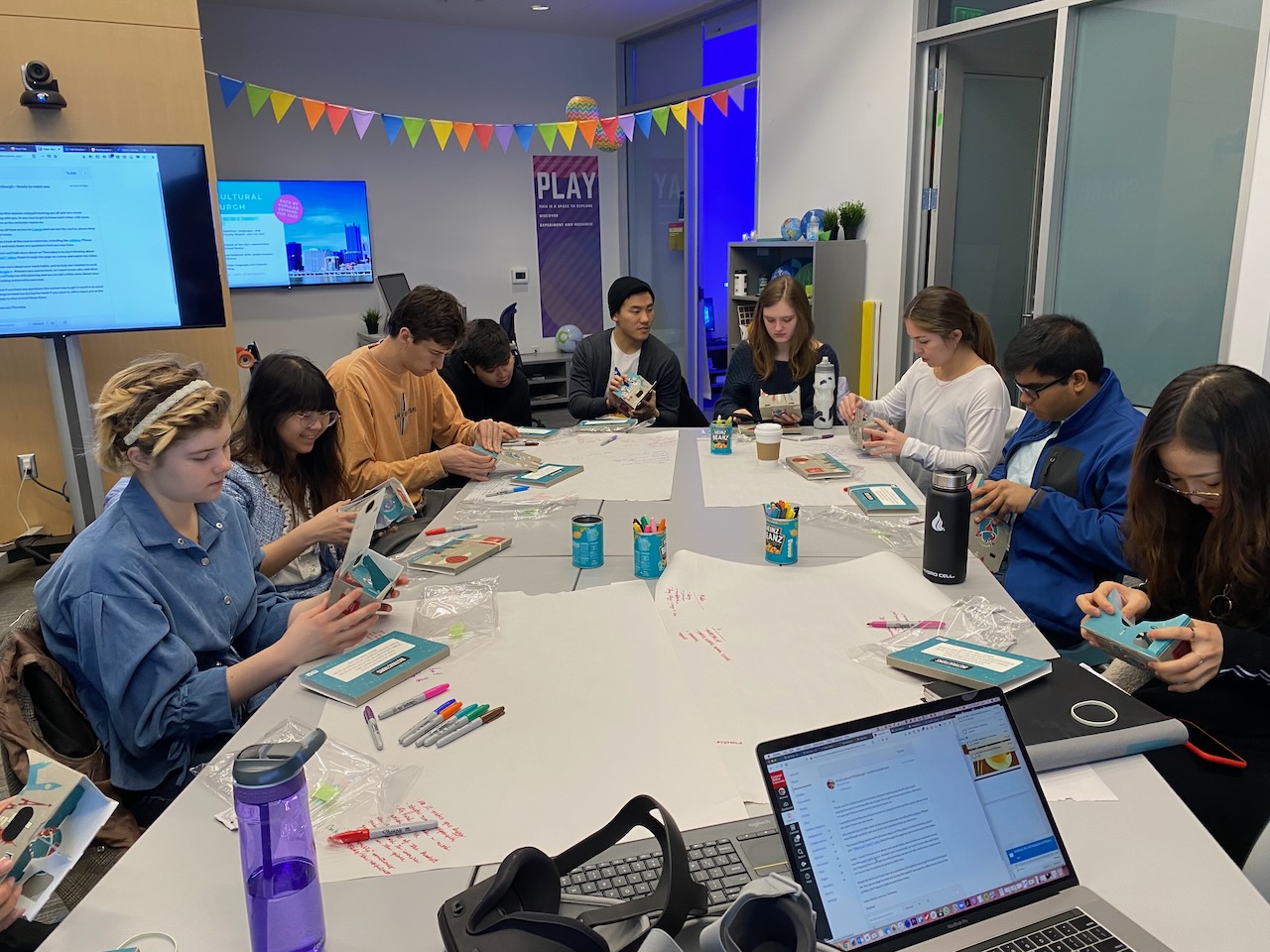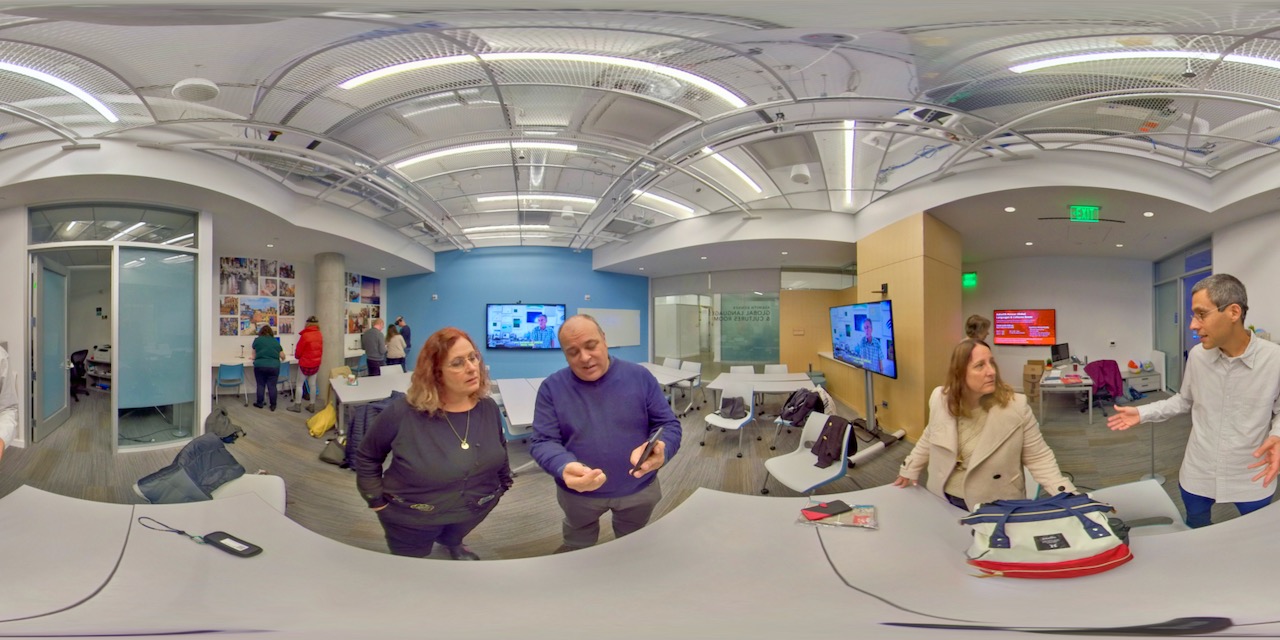
Instructor Spotlight: Stephan Caspar
By Sarah Elizabeth Bender
Within the Integrative Design, Arts, and Technology (IDeATe) network at Carnegie Mellon, talented instructors come together from departments across campus to build a collaborative atmosphere and grow interdisciplinary expertise and creative inquiry through making. We asked Associate Teaching Professor in Media Creation and Multicultural Studies Stephan Caspar a few questions about his work, to find out more about the ways he inspires students to innovate beyond the traditional boundaries of their primary majors.
Q: In your own words, give us an overview of what you teach for IDeATe.
A: I teach several courses in IDeATe, and I’m based in The Kenner Room, a purpose-built space for exploring themes in language and culture through immersive media. Students engage with virtual reality, augmented reality, 360-degree video, and mixed-reality storytelling. These courses are hands-on, encouraging students to experiment with filmmaking, game creation, and interactive media design. More than just learning the technology, the class focuses on storytelling. Students explore ways to create meaningful immersive experiences that connect with audiences, often drawing inspiration from their own cultures, identities, and heritage. I also teach a course on teaching and learning, where students design their own learning experiences and reflect critically on alternative approaches to education. Much of this work connects to the SONA Immersive Storytelling Festival, which brings together creators working in immersive media to share ideas, develop new work, and explore how immersive storytelling can be used to engage and inspire audiences.

Q: Students from all backgrounds, not just those with expertise in immersive technologies, can take your class. How can learning about immersive technologies elevate any academic experience? What lessons might translate to other disciplines?
A: Immersive storytelling places the user at the center of an experience, allowing them to interact and connect with stories in powerful ways. The creation of these experiences draws on a wide range of skills, which attracts students from diverse academic backgrounds. Students from architecture, music, computer science, arts, and languages all contribute to ideas about space, interaction, and design. They are encouraged to bring their own unique perspectives to the course, often writing stories that reflect their own cultures and identities. Our goal is to help them design virtual reality or augmented reality experiences that are intuitive, engaging, and deeply resonant. By thinking spatially, considering user experience, and crafting compelling narratives, students develop skills that translate across disciplines and fields.

Q: Within IDeATe, students have the chance to work on projects with other students from across campus. What opportunities for interdisciplinary collaboration does your class offer? Why is that important?
A: Collaboration is key to the class. Some students arrive with strong technical skills, while others bring expertise in storytelling, design, or computing. The most exciting work happens when they combine their skills to create something none of them could have built alone. One student might code an interactive VR experience while another composes the sound design, and someone else develops the visual assets or writes the script. Students are not confined to their expected roles, and it is not uncommon to find artists exploring coding while computer science students experiment with drawing and 3D modeling. This kind of creative exchange is what makes IDeATe special. I feel strongly that it mirrors professional creative environments where diverse skills and perspectives come together to produce meaningful work.
Q: What do you find most meaningful or impactful about teaching with IDeATe? How does it differ from your home department of Languages, Cultures & Applied Linguistics?
A: Teaching in both LCAL and IDeATe provides a space where my own philosophies of learning can thrive. I feel supported and encouraged to experiment, explore ideas, and develop my own creative practice. While my home department focuses on language learning and cultural understanding, IDeATe allows me to connect that with design and technology, while creating compelling learning experiences for our students. I feel at home in IDeATe and am truly inspired by the educators who make up this network. I only wish I had the chance to be an IDeATe student myself; as I feel IDeATe and LCAL emphasize student care and encourage thoughtful approaches to teaching. Through small class sizes, experiential projects, and playful learning, we're able to create spaces where students feel safe to explore their identities, can center their own experiences, and express themselves with the support of a shared learning community.

Q: What is one key takeaway you hope students in your class have learned by the end of the semester?
A: I want students to leave with confidence in their ability to play and create. At its core, my class is about storytelling. We have new tools, new approaches, and new ways to tell stories, but the fundamental skills of narrative and audience engagement remain tied to a craft and that is reflected in different cultures, histories, and traditions that approach storytelling in unique ways. Creativity can be messy, so I want students to embrace uncertainty, develop their own creative voice, and in the context of immersive media, to think critically about how technology shapes storytelling. If they leave the class feeling happy, having enjoyed the process of exploring ideas and possibilities, and sharing a little of themselves, then I consider that a success. I am always grateful for the opportunity to work with such talented students and am fascinated by where their paths take them. I hope they know they can always reach out for support, guidance, or just to share what they are working on. I am always interested to see what comes next.
For more of Caspar’s reflections on IDeATe, teaching, and learning, you can subscribe to his newsletter on Substack.